Abstract
A reinforced practice procedure was used to facilitate cooperative behavior in five children, aged 3 to 6 years, during dental treatment. In a multiple baseline design across subjects, the children were rewarded with escape, inexpensive stickers, and praise for cooperative behavior in the presence of the sights, sounds, and some sensations of the dental instruments prior to actual dental treatment. Direct observations of disruptive behavior via a 15-s interval recording system indicated baseline levels as high as 90% were reduced to less than 15% by the final treatment visit. In addition, the procedure was effective in reducing overall heart rate and blood pressure reactivity to dental treatment. All children were rated by the involved dental professionals as more cooperative and relaxed following exposure to reinforced practice.
Full text
PDF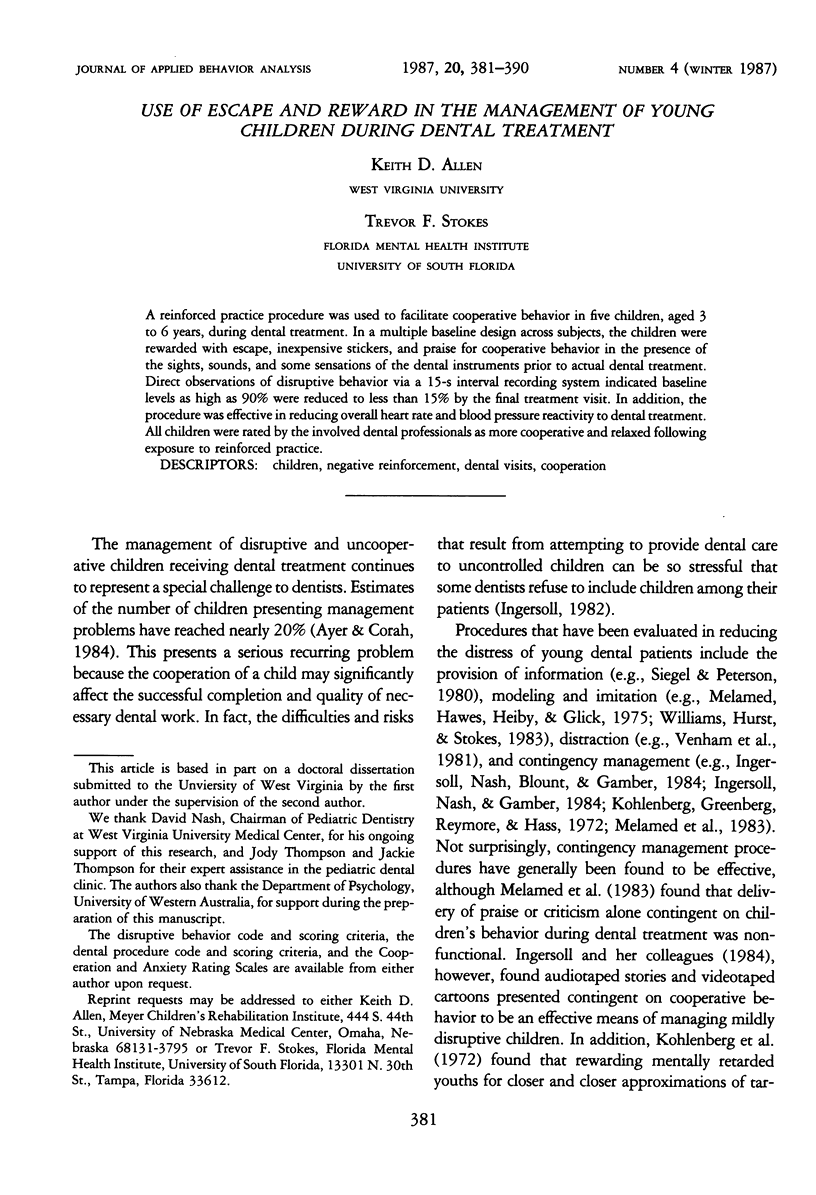
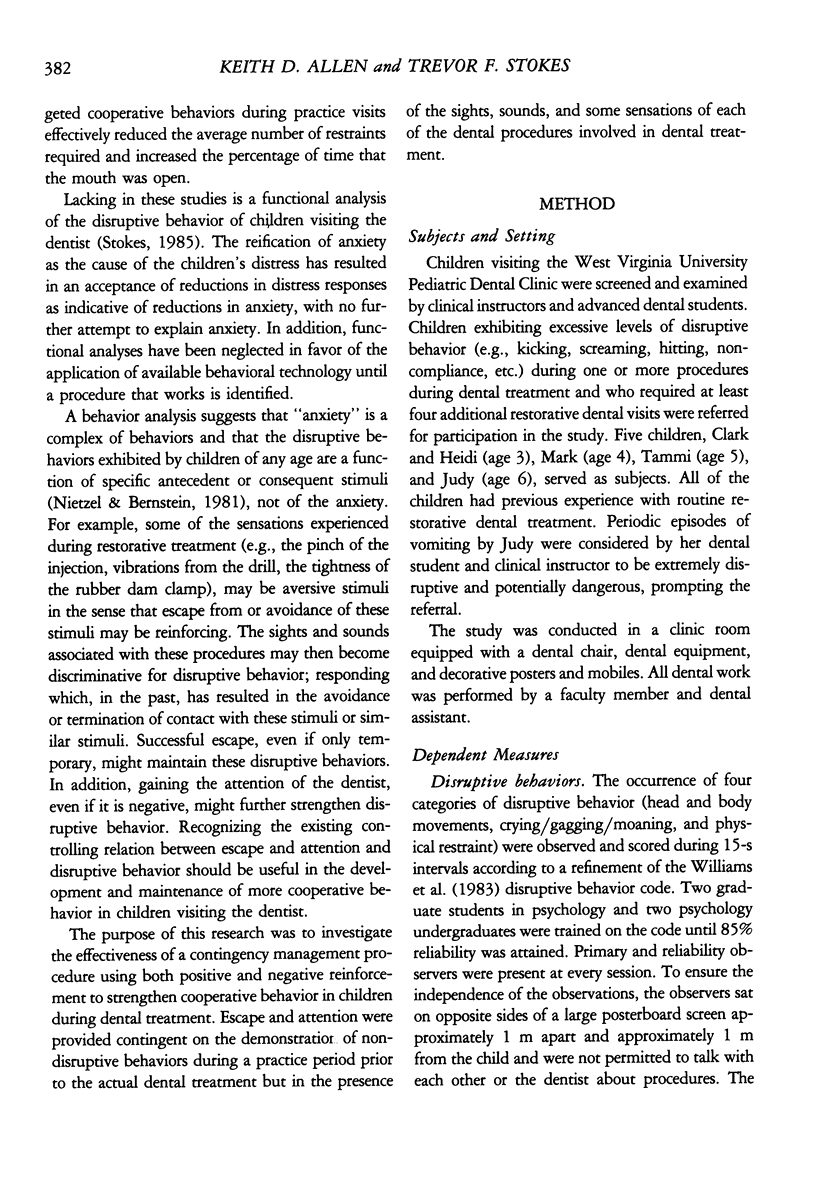
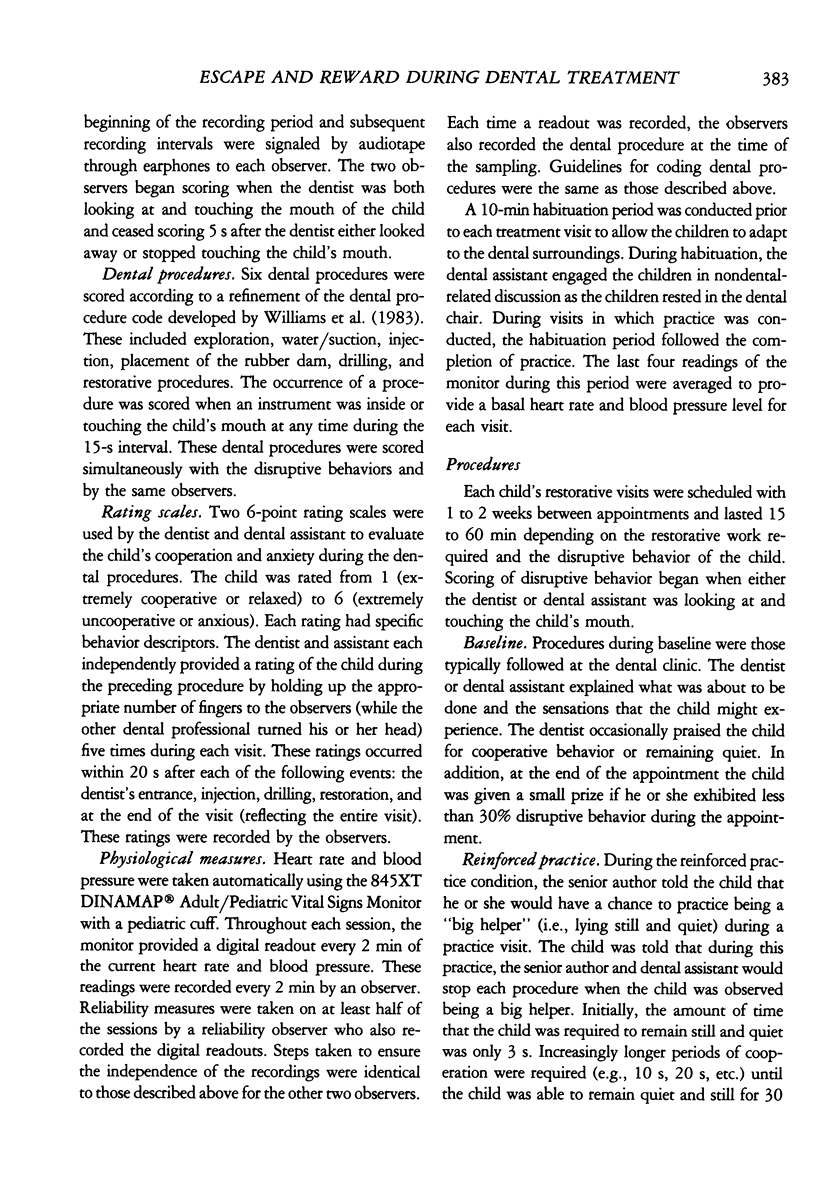
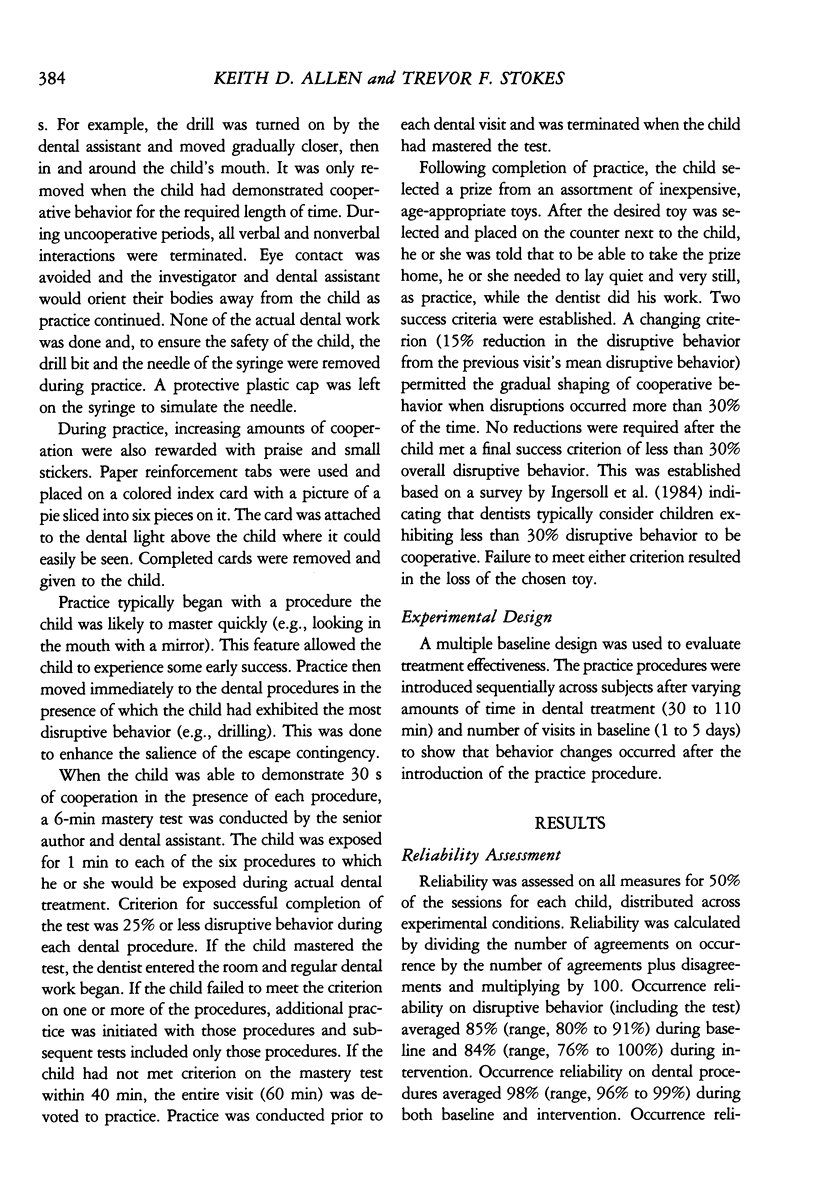
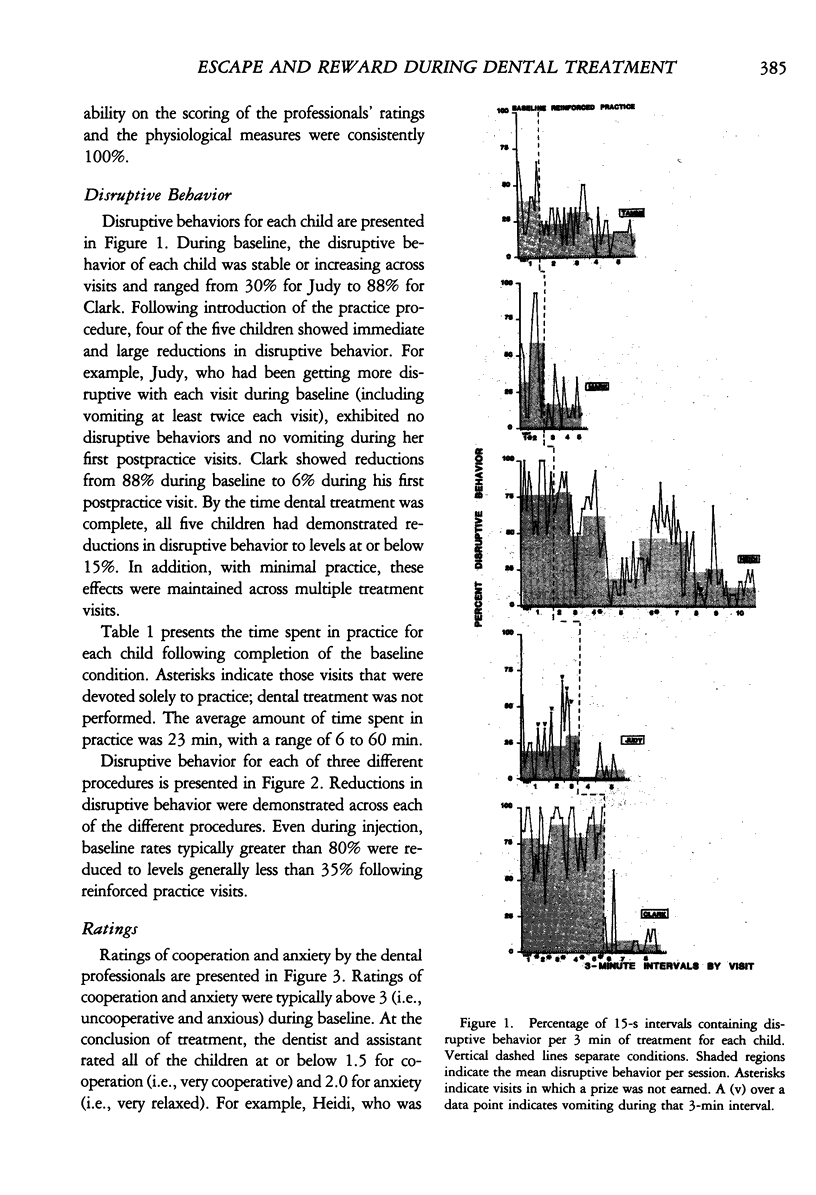
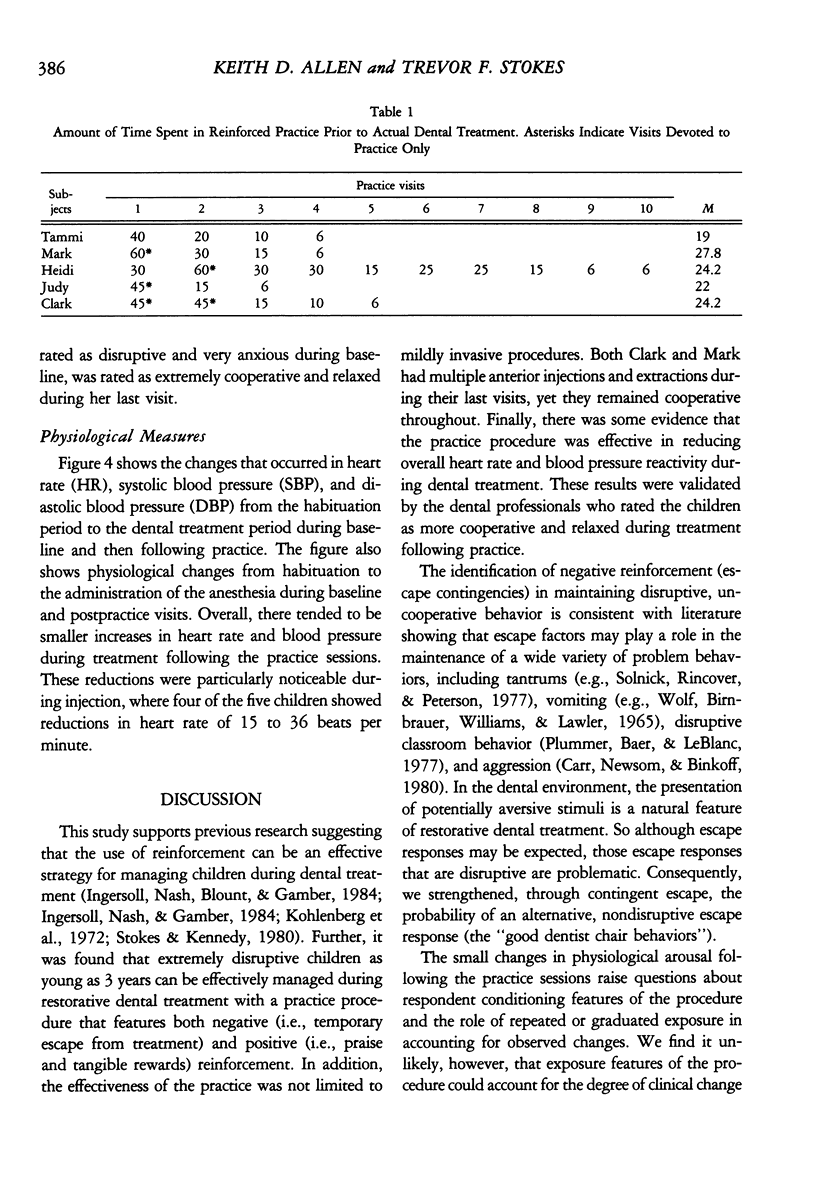
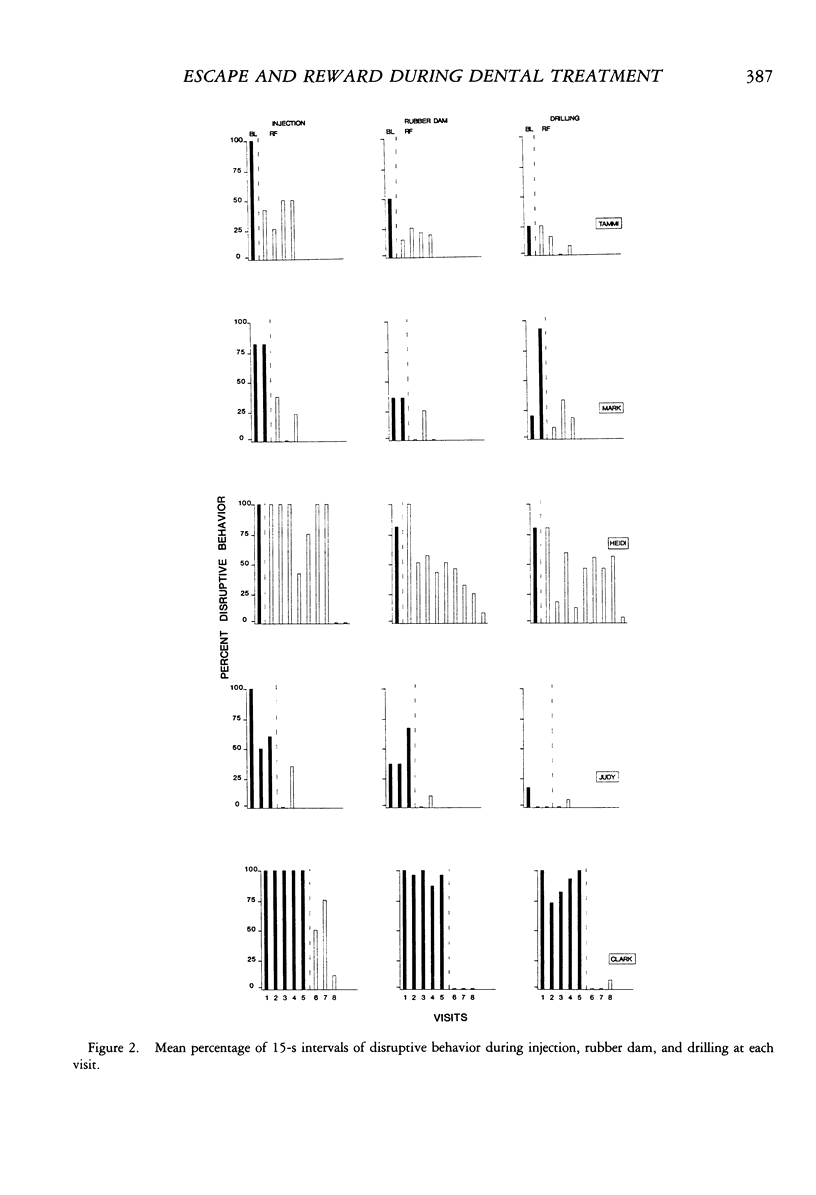
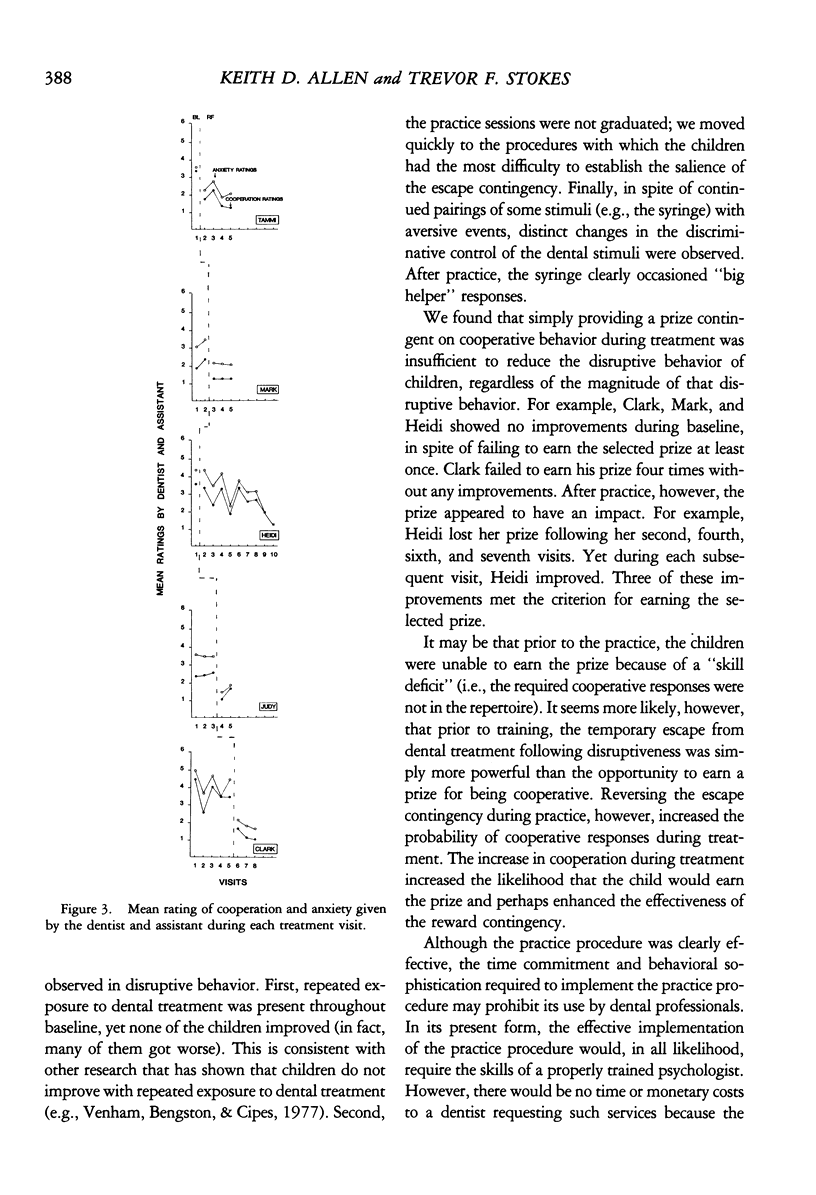
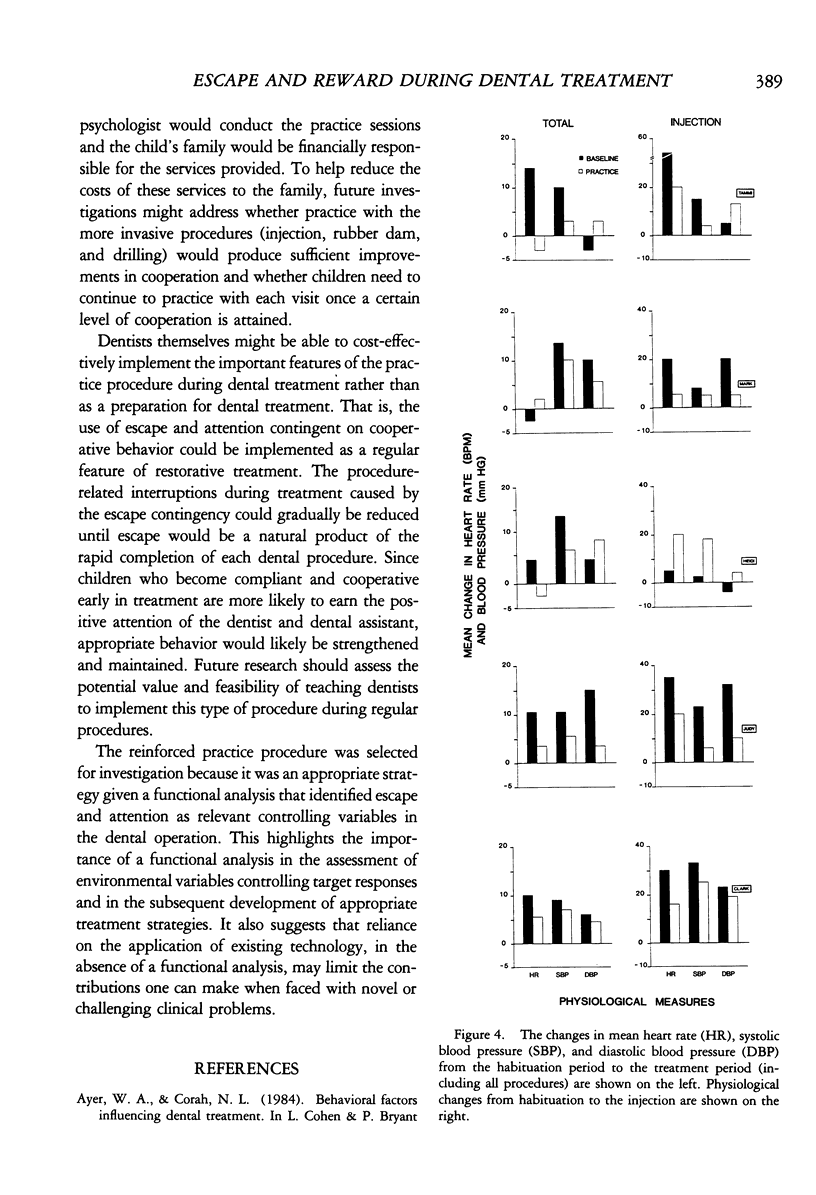
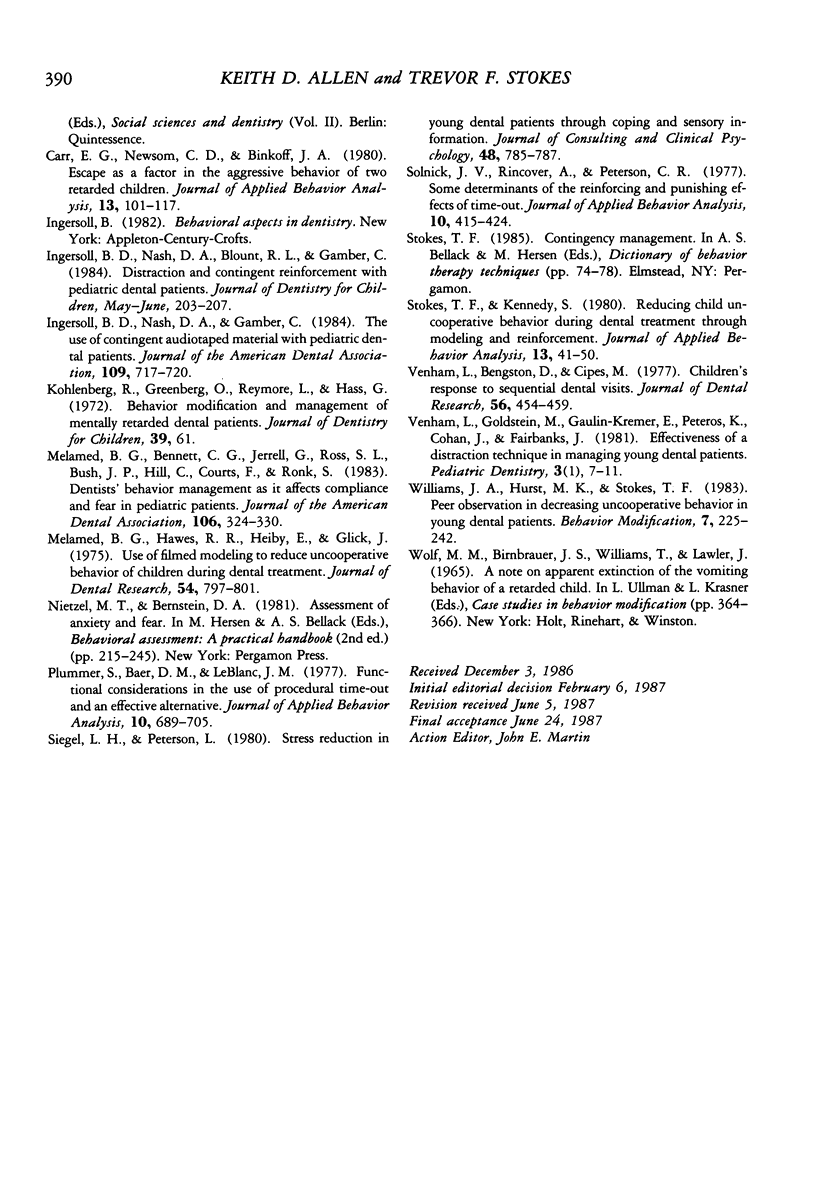
Selected References
These references are in PubMed. This may not be the complete list of references from this article.
- Carr E. G., Newsom C. D., Binkoff J. A. Escape as a factor in the aggressive behavior of two retarded children. J Appl Behav Anal. 1980 Spring;13(1):101–117. doi: 10.1901/jaba.1980.13-101. [DOI] [PMC free article] [PubMed] [Google Scholar]
- Ingersoll B. D., Nash D. A., Blount R. L., Gamber C. Distraction and contingent reinforcement with pediatric dental patients. ASDC J Dent Child. 1984 May-Jun;51(3):203–207. [PubMed] [Google Scholar]
- Ingersoll B. D., Nash D. A., Gamber C. The use of contingent audiotaped material with pediatric dental patients. J Am Dent Assoc. 1984 Nov;109(5):717–719. doi: 10.14219/jada.archive.1984.0170. [DOI] [PubMed] [Google Scholar]
- Melamed B. G., Bennett C. G., Jerrell G., Ross S. L., Bush J. P., Hill C., Courts F., Ronk S. Dentists' behavior management as it affects compliance and fear in pediatric patients. J Am Dent Assoc. 1983 Mar;106(3):324–330. doi: 10.14219/jada.archive.1983.0055. [DOI] [PubMed] [Google Scholar]
- Melamed B. G., Hawes R. R., Heiby E., Glick J. Use of filmed modeling to reduce uncooperative behavior of children during dental treatment. J Dent Res. 1975 Jul-Aug;54(4):797–801. doi: 10.1177/00220345750540041701. [DOI] [PubMed] [Google Scholar]
- Plummer S., Baer D. M., LeBlanc J. M. Functional considerations in the use of procedural timeout and in effective alternative. J Appl Behav Anal. 1977 Winter;10(4):689–705. doi: 10.1901/jaba.1977.10-689. [DOI] [PMC free article] [PubMed] [Google Scholar]
- Siegel L. J., Peterson L. Stress reduction in young dental patients through coping skills and sensory information. J Consult Clin Psychol. 1980 Dec;48(6):785–787. doi: 10.1037//0022-006x.48.6.785. [DOI] [PubMed] [Google Scholar]
- Solnick J. V., Rincover A., Peterson C. R. Some determinants of the reinforcing and punishing effects of timeout. J Appl Behav Anal. 1977 Fall;10(3):415–424. doi: 10.1901/jaba.1977.10-415. [DOI] [PMC free article] [PubMed] [Google Scholar]
- Stokes T. F., Kennedy S. H. Reducing child uncooperative behavior during dental treatment through modeling and reinforcement. J Appl Behav Anal. 1980 Spring;13(1):41–49. doi: 10.1901/jaba.1980.13-41. [DOI] [PMC free article] [PubMed] [Google Scholar]
- Venham L. L., Goldstein M., Gaulin-Kremer E., Peteros K., Cohan J., Fairbanks J. Effectiveness of a distraction technique in managing young dental patients. Pediatr Dent. 1981 Mar;3(1):7–11. [PubMed] [Google Scholar]
- Venham L., Bengston D., Cipes M. Children's response to sequential dental visits. J Dent Res. 1977 May;56(5):454–459. doi: 10.1177/00220345770560050101. [DOI] [PubMed] [Google Scholar]
- Williams J. A., Hurst M. K., Stokes T. F. Peer observation in decreasing uncooperative behavior in young dental patients. Behav Modif. 1983 Apr;7(2):225–242. doi: 10.1177/01454455830072007. [DOI] [PubMed] [Google Scholar]


